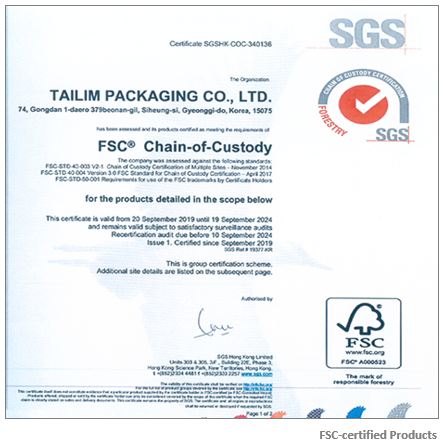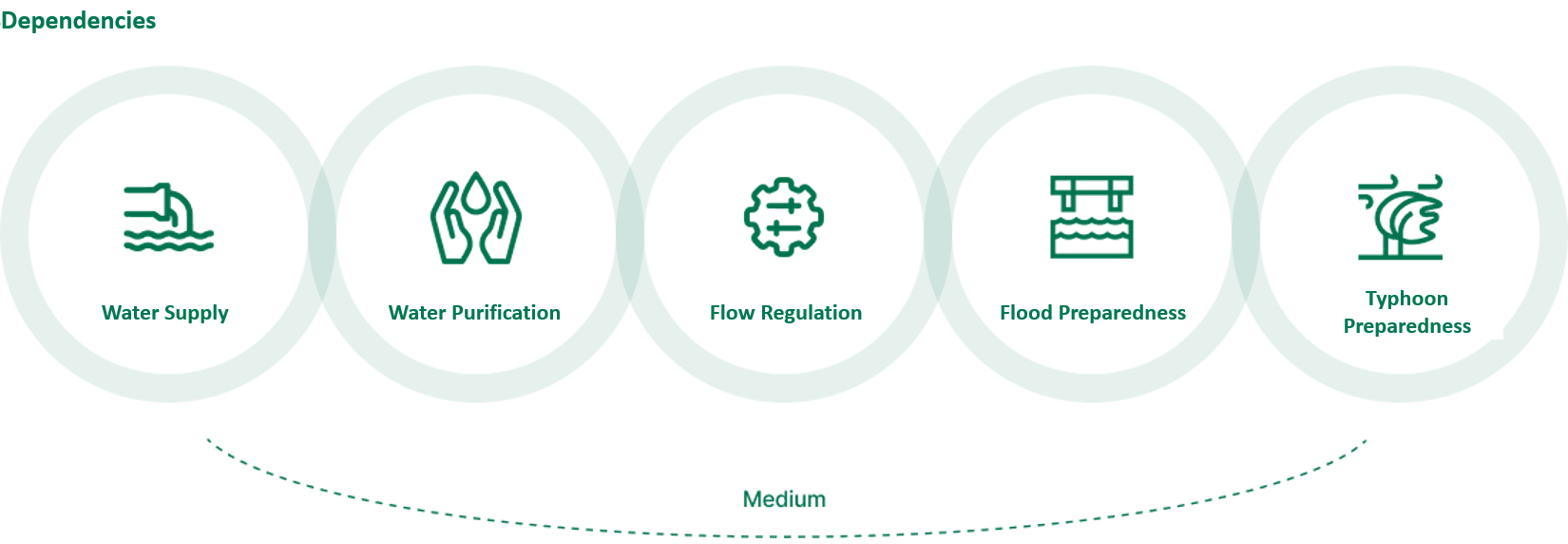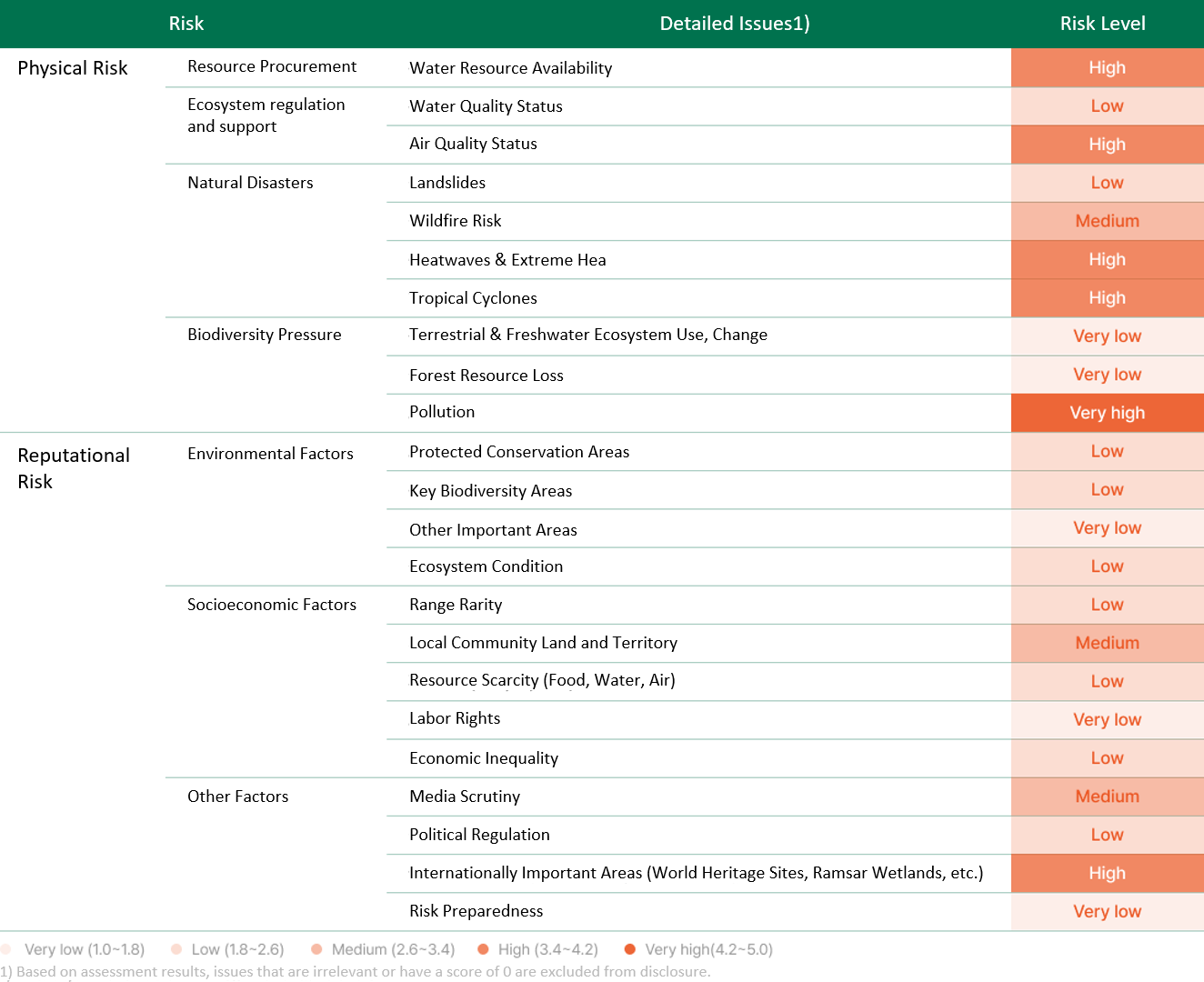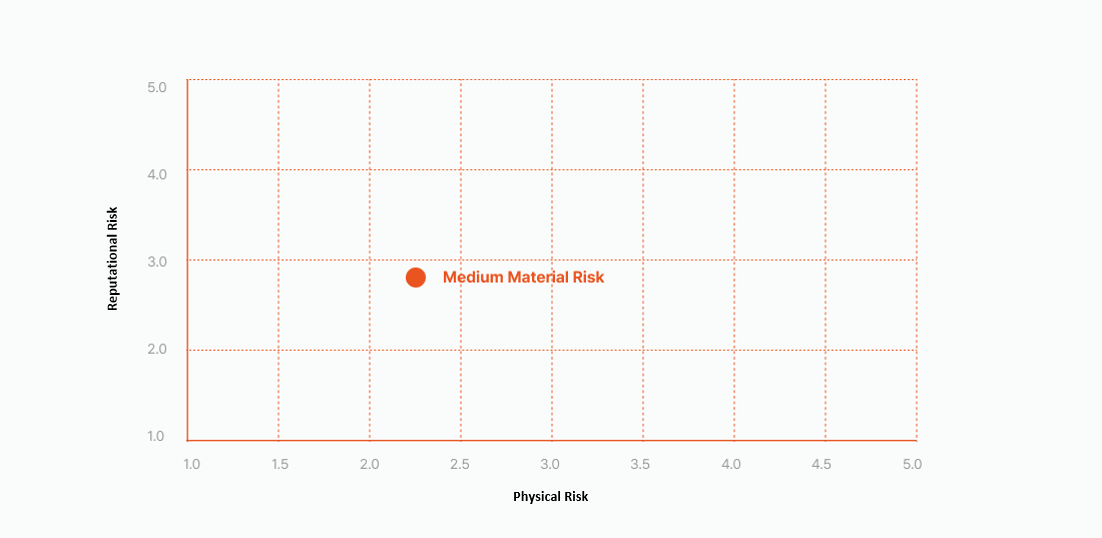
Biodiversity Activities
For sustainable forest management, MCNEX uses FSC (Forest Stewardship Council) certified materials in its products and for packaging. FSC certification is granted to products made from raw materials from sustainably managed forests under the stewardship of the Forest Stewardship Council, which discourages the use of raw materials obtained through illegal logging. MCNEX has entered into procurement contracts with FSC-certified companies for these raw materials and currently uses them for the packaging of some of its products. Going forward, MCNEX plans to increase its use of certified sustainable raw materials to meet the requirements of global sustainability reporting guidelines.

Biodiversity Risk Assessment
MCNEX deeply recognizes the impact that the loss of natural capital has on corporate activities and, furthermore, on the sustainability of humanity. In response, MCNEX is striving to systematically manage natural capital risks, including those related to biodiversity. Across its overall business activities, MCNEX is strengthening the sustainability of natural capital through various initiatives such as water resource management, pollutant reduction, and biodiversity conservation.
In particular, to assess nature-related risks and opportunities, MCNEX has adopted and is conducting assessments using the LEAP(Locate, Evaluate, Assess, Prepare) approach proposed by the TNFD(Taskforce on Nature-related Financial Disclosures). Based on these assessments, the company is developing management plans for the identified risks and opportunities. Going forward, MCNEX will continue to actively implement activities that minimize the loss of natural capital and contribute positively to nature for biodiversity conservation.
Identifying Ecologically Sensitive Areas (Locate)
MCNEX conducted an analysis focused on areas near its domestic headquarters to identify regions with high nature-related dependencies and impacts, as well as areas linked to specific ecosystems.
According to the statistical data on endangered wildlife species provided by the National Institute of Ecology (NIE, Korea), Yeonsu-gu, Incheon—where MCNEX's headquarters is located—is home to three Class I and fourteen Class II endangered wildlife species. Additionally, the Songdo Tidal Flat, designated as a Ramsar Protected Wetland¹⁾, is located near the company's business site.
MCNEX recognizes the value of the ecosystems and biodiversity in the areas surrounding its business sites and is committed to doing its utmost for their conservation.
1) Ramsar Protected Wetland : A wetland designated under the Ramsar Convention for the protection of areas that possess unique biogeographical characteristics, or are important as habitats for rare animals and waterfowl.
Biodiversity Status of Areas Near Business Site

(Source: Statistical Data Book on Endangered Wildlife Species, National Institute of Ecology)
Dependency and Impact Assessment (Evaluate)
To assess nature-related dependencies and impacts, MCNEX utilized the ENCORE²⁾ Tool.
According to the results of the industry-specific dependency and impact assessment for its Incheon headquarters, MCNEX identified a relatively high dependency on water resources (including water supply, water purification, flow regulation, and flood preparedness). Among its impacts on nature, those from air pollutants were identified as high. After comprehensively considering these dependencies and impacts, MCNEX designated air quality and water resources as priority management areas.
2) ENCORE : A tool developed by the Natural Capital Finance Alliance to identify exposure to nature-related risks and to understand dependencies and impacts on nature.


Risk and Opportunity Assessment (Assess)
Based on the results of its nature-related dependency and impact assessment, MCNEX conducted a further assessment using the WWF Biodiversity Risk Filter Tool to identify risks and opportunities related to natural capital. The assessment confirmed that the biodiversity risk for MCNEX's Incheon Songdo headquarters is at a 'Medium' level.

Biodiversity Risk

Response and Disclosure (Prepare)
Through its assessments, MCNEX has identified biodiversity factors that were assessed as high risk. The company plans to establish and implement management measures for these factors. Furthermore, MCNEX plans to expand the scope of its biodiversity risk assessment to include MCNEX VINA.
Key Risk | Mitigation Strategy | Management Plan | GBF²⁾ Target |
Water Resource Availability | Minimize | · There is no wastewater generated from business activities at the Incheon headquarters. | Target 16 |
Air Quality Status | Minimize | · The Incheon headquarters has no facilities that emit air pollutants. | Target 11 |
Tropical Cyclones | Avoid | · Scenario analysis is conducted to prepare for potential damages arising from potential risks. | Target 8 |
Pollution | Restore | · Environmental cleanup activities are conducted in areas near business sites to minimize pollution damage resulting from business activities. | Target 7 |
Internationally Important Areas | Minimize | · MCNEX plans to monitor areas relevant to stakeholders (biodiversity), such as Songdo Tidal Flat and Sihwa Lake, and conduct ongoing risk assessments. | Target 15 |
2) GBF (Global Biodiversity Framework): International goals for the conservation of biodiversity and its sustainable use by 2030.
